Related Research Articles

The Samoan Islands were first settled some 3,500 years ago as part of the Austronesian expansion. Both Samoa's early history and its more recent history are strongly connected to the histories of Tonga and Fiji, nearby islands with which Samoa has long had genealogical links as well as shared cultural traditions.
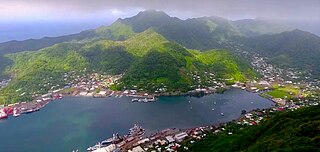
Pago Pago is the capital of American Samoa. It is in Maoputasi County on Tutuila, which is American Samoa's main island.

The flag of American Samoa is a flag consisting of a red-edged white triangle pointing towards the hoist charged with a bald eagle clutching a war club and fly-whisk, with dark blue upper and lower triangles. Adopted in April 1960 to replace the "Stars and Stripes" as the official flag of the territory, it has been the flag of the Territory of American Samoa since that year. The colors used epitomize the traditional colors of the United States and Samoa.
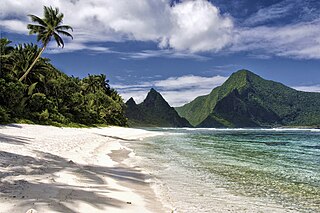
In the law of the United States, an insular area is a U.S.-associated jurisdiction that is not part of a U.S. state or the District of Columbia. This includes fourteen U.S. territories administered under U.S. sovereignty, as well as three sovereign states each with a Compact of Free Association with the United States. The term also may be used to refer to the previous status of the Swan Islands, Hawaii, Puerto Rico, and the Philippines, as well as the Trust Territory of the Pacific Islands when it existed.

Territories of the United States are sub-national administrative divisions overseen by the federal government of the United States. The various American territories differ from the U.S. states and Indian reservations as they are not sovereign entities. In contrast, each state has a sovereignty separate from that of the federal government and each federally recognized Native American tribe possesses limited tribal sovereignty as a "dependent sovereign nation." Territories are classified by incorporation and whether they have an "organized" government through an organic act passed by the Congress. American territories are under American sovereignty and, consequently, may be treated as part of the United States proper in some ways and not others. Unincorporated territories in particular are not considered to be integral parts of the United States, and the Constitution of the United States applies only partially in those territories.

The American Samoa men's national football team represents American Samoa in men's international association football and is controlled by the Football Federation American Samoa, the governing body of the sport in the territory. American Samoa's home ground is the Pago Park Soccer Stadium in Pago Pago and their head coach is Tunoa Lui.
Samoan Americans are Americans of Samoan origin, including those who emigrated from the United States Territory of American Samoa and immigrants from the Independent State of Samoa to the United States. Samoan Americans are Pacific Islanders in the United States Census, and are the second largest Pacific Islander group in the U.S., after Native Hawaiians.
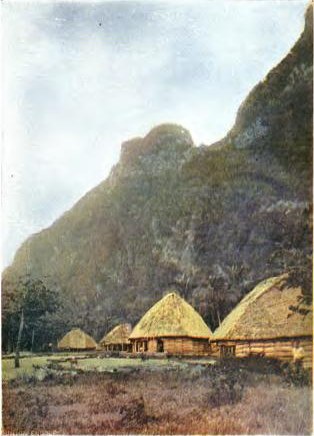
The islands of Samoa were originally inhabited by humans as early as 850 BC. After being invaded by European explorers in the 18th century, by the 20th and 21st century, the islands were incorporated into Samoa and American Samoa.

The American Samoa House of Representatives is the lower house of the American Samoa Fono. The House consists of 21 members serving two-year terms, with 20 popularly elected representatives, and one delegate from Swains Island elected in a public meeting.

Fagatogo is the downtown area of Pago Pago. Located in the low grounds at the foot of Matafao Peak, it was the location of the first American settlement on Tutuila Island. It includes the sub-village of Malaloa. Today, Fagatogo is the government, commercial, financial, and shipping center of Tutuila. It is also the administrative capital of American Samoa. It is the location of the American Samoa Fono (legislature), and is listed in the Constitution of American Samoa as the territory's official seat of government. Its population is 1,737.

Pacific Islander Americans are Americans who are of Pacific Islander ancestry. For its purposes, the United States census also counts Aboriginal Australians as part of this group.

American Samoa is administratively divided into three districts and two unorganized atolls. The districts are subdivided into 15 counties, which are composed of 76 villages.

Leone is the second-largest city on Tutuila Island's west coast. The village is on the south-west coast of Tutuila Island, American Samoa. Leone was the ancient capital of Tutuila Island. Leone was also where the Samoan Islands’ first missionary, John Williams, visited on October 18, 1832. A monument in honor of Williams has been erected in front of Zion Church. Its large church was the first to be built in American Samoa. It has three towers, a carved ceiling and stained glass. Until steamships were invented, Leone was the preferred anchorage of sailing ships which did not risk entering Pago Pago Harbor. Much early contact between Samoans and Europeans took place in Leone.

American Samoa is an unincorporated territory of the United States located in the South Pacific Ocean, southeast of the island country of Samoa. Centered on 14.3°S 170.7°W, it is east of the International Date Line and the Wallis and Futuna Islands, west of the Cook Islands, north of Tonga, and some 500 kilometers (310 mi) south of Tokelau. American Samoa is the southernmost territory of the United States and one of two U.S. territories south of the Equator, along with the uninhabited Jarvis Island.
Afao is a village in southwest Tutuila Island, American Samoa. It is located on the island's short southwestern coast, between 'Amanave and Leone, to the southwest of Pago Pago. It includes the settlement of Atauloma. Afao is home to two places listed on the U.S. National Register of Historic Places: Afao Beach Site and Atauloma Girls School.
The Treaty of Cession of Tutuila, also known as the Deed of Cession of Tutuila, was a treaty between several chiefs of the island of Tutuila and the United States signed on April 17, 1900, whereby the chiefs swore allegiance to, and ceded the island of Tutuila to, the United States, which now forms part of American Samoa. It came about because of the Second Samoan Civil War and the Tripartite Convention of 1899 between the United States, the United Kingdom, and the German Empire. It was ratified by the United States Congress by the Ratification Act of 1929.

Amata Catherine Coleman Radewagen, commonly called Aumua Amata, is an American Samoan politician who is the current delegate for the United States House of Representatives from American Samoa. Radewagen, a Republican, was elected on November 4, 2014, after defeating Democratic incumbent Eni Faleomavaega; she was the first-ever Republican delegate since the office had been created in 1970 and began her tenure on January 3, 2015. She also serves as the national committeewoman for the Republican Party of American Samoa. Amata is the first woman to represent American Samoa in the U.S. Congress.
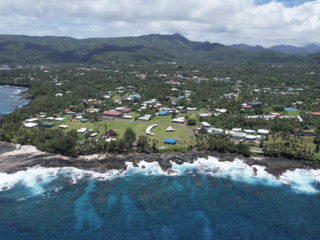
Vailoatai is a village in southwestern Tutuila, the main island of American Samoa. It is located on the eastern end of Leone Bay. The village is known for its beautiful malae, nested along the island's rugged southern coast and lined by the fale tali mālō of its village chiefs.
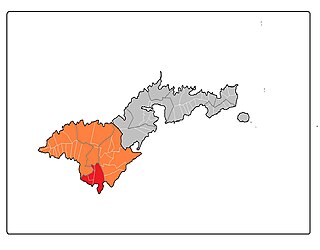
Tuālā-tai County is one of the five counties that make up the Western District of American Samoa.

American Samoa consists of a group of two coral atolls and five volcanic islands in the South Pacific Ocean of Oceania. The first permanent European settlement was founded in 1830 by British missionaries, who were followed by explorers from the United States, in 1839, and German traders in 1845. Based upon the Tripartite Convention of 1899, the United States, Great Britain, and Germany agreed to partition the islands into German Samoa and American Samoa. Though the territory was ceded to the United States in a series of transactions in 1900, 1904, and 1925, Congress did not formally confirm its acquisition until 1929. American Samoans are non-citizen nationals of the United States. Non-citizen nationals do not have full protection of their rights, though they may reside in the United States and gain entry without a visa. Territorial citizens do not have the ability for full participation in national politics and American Samoans cannot serve as officers in the US military or in many federal jobs, are unable to bear arms, vote in local elections, or hold public office or civil-service positions even when residing in a US state. Nationality is the legal means in which inhabitants acquire formal membership in a nation without regard to its governance type. Citizenship is the relationship between the government and the governed, the rights and obligations that each owes the other, once one has become a member of a nation.
References
- ↑ "GI MALALA and PULU TALALOTU (for the Mauga family and Gi family) v. AMERICAN SAMOA GOVERNMENT". American Samoa Bar Association. 17 October 2001. Archived from the original on 10 January 2020.
- ↑ Stoler, Ann Laura and Willy Brandt (2006). Haunted by Empire: Geographies of Intimacy in North American History. Duke University Press. Page 88. ISBN 9780822337249.